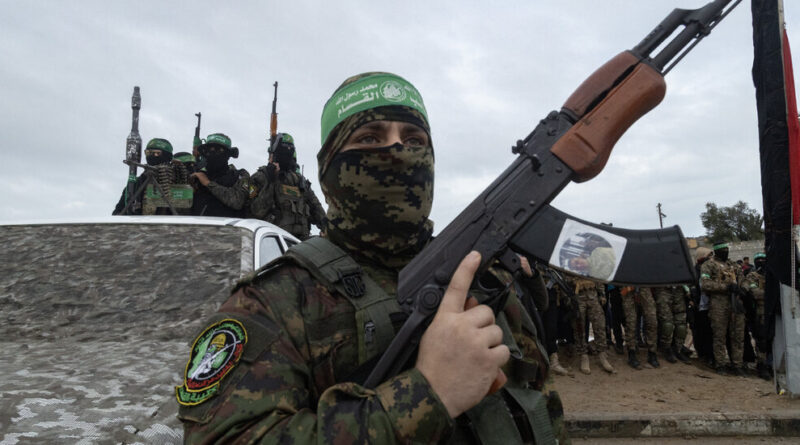Militant’s Killing Would Be Blow to Hamas, but Long-Term Impact is Unclear
The assassination of Muhammad Sinwar, the influential Hamas leader whom Israel tried to kill in a recent strike, would be a major tactical success for Israel but its long-term significance is unclear. The group has survived for decades despite Israel’s systematic assassination of its leaders.
Mr. Sinwar, whose fate is still unknown, is considered one of Hamas’s leading military commanders in Gaza. He is the younger brother of Yahya Sinwar, an architect of Hamas’s deadly attack on Israel in October 2023, whom Israeli troops killed last year. Israeli and Middle Eastern officials have concluded that Mr. Sinwar is one of the biggest obstacles to a new cease-fire in Gaza: They say he is among the Hamas officials most opposed to relinquishing the group’s arsenal — an Israeli precondition for any long-term truce.
But though powerful, Mr. Sinwar is just one of several senior military leaders in Gaza, and far from the only Hamas leader opposed to concessions to Israel. His killing would undermine the group, analysts said, but might not change Hamas’s strategic outlook and operational abilities or soften Israel’s uncompromising approach to cease-fire negotiations.
“If confirmed, his death would definitely be another big blow to Hamas — many of their senior military and political leaders have been killed, and Hamas can’t replace all of them,” said Mkhaimar Abusada, a political scientist from Gaza.
“But I’m not sure if his death will lead to a compromise with Israel, and it might even backfire, if his successor turns out to be even more radical than Sinwar,” he added. “Hamas is not a one-man show and its negotiations with Israel still depend on a collective decision.”
Mr. Sinwar’s death would also be unlikely to change Israeli battlefield calculations. Israel’s aims extend far beyond killing specific commanders, as it seeks “total victory” over Hamas, even if Israeli leaders have struggled to define what that means.
For decades, Hamas has weathered the assassinations of scores of its top leaders, repeatedly proving that its survival does not depend on any single individual. That has again proved true during this war. In addition to Yahya Sinwar, Israel has killed other leaders, including Ismail Haniyeh and Muhammad Deif — but failed to defeat Hamas as a military and governing force.
If anything, Hamas has become more intransigent in the immediate aftermath of major assassinations. The group has been reluctant to display weakness, even if it has sometimes become more malleable in cease-fire talks several months later.
After Israel killed Mr. Haniyeh, a key Hamas negotiator, last July, American and Palestinian officials said that it had had a harmful effect on talks over a truce. After the killing of Yahya Sinwar, Hamas said his death had strengthened its resolve and pledged to continue along the same path. Yet three months later, the group agreed to a truce, after concessions from both Hamas and Israel.
That mutual compromise points to another reason Mr. Sinwar’s death would have limited long-term consequence: The war’s trajectory is as dependent on Israel as it is on Hamas.
Israel seeks either a temporary truce to free more of the roughly 60 hostages still held in Gaza or a permanent deal that guarantees Hamas’s defeat. But Hamas opposes both scenarios, so the war will likely drag on unless Israel softens its position. Israel has already pledged to vastly expand its military operations in Gaza in the coming days.
For some, that makes Israel a bigger obstacle to a cease-fire than Hamas. The main problem in Gaza is “not who leads Hamas,” said Ahmad Jamil Azem, a Palestinian political scientist at Qatar University. “The insistence of the Israeli government to continue the war is the actual problem.”
Even without Mr. Sinwar, Hamas still has experienced commanders in Gaza, including Izz al-Din al-Haddad, who oversees Hamas’s brigades in northern Gaza, and Muhammad Shabaneh, a top officer in southern Gaza.
Despite big losses, Hamas has also been able to replace slain members of its lower ranks. A recent Israeli intelligence assessment suggested that Hamas had more than 20,000 fighters at its disposal — roughly the same as prewar levels — despite thousands being killed since October 2023.
Hamas also fired a barrage of rockets at southern Israel on Tuesday night, one of its largest bursts in months. The attack highlighted that Hamas still retains some short-range projectiles and launchers to force Israelis into air raid shelters at a few seconds’ notice.
A senior Middle Eastern intelligence official, speaking on the condition of anonymity to discuss sensitive security matters, said that Hamas still retained a strategic network of tunnels under parts of Gaza City. The official also said that Hamas’s military intelligence unit had survived the war without significant damage and continued to play a major role in maintaining Hamas’s grip on power.
.
Hamas seeks to turn the war into a stalemate, and to survive the war as a movement. Those two relatively modest targets allow it to weather a high level of carnage and bloodshed.
In contrast, Prime Minister Benjamin Netanyahu seeks Hamas’s total defeat, as well as the return of the hostages held by the group, both living and dead. Israeli generals have long concluded that these two goals are mutually incompatible.
Ibrahim Dalalsha, a Palestinian political analyst, said that Israel’s strategic incoherence “strongly suggests that this, too, will become just another footnote — rather than a transformative turning point.”

